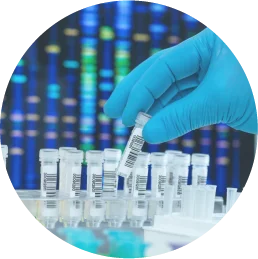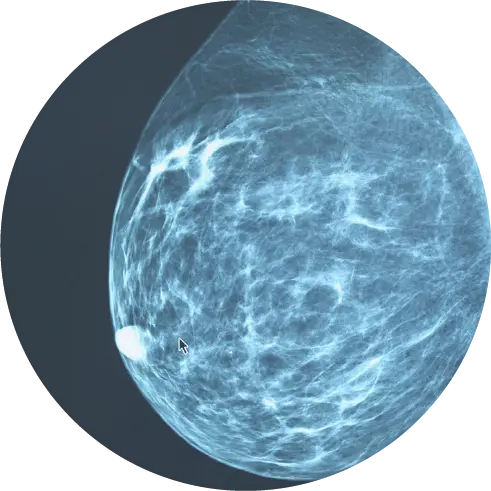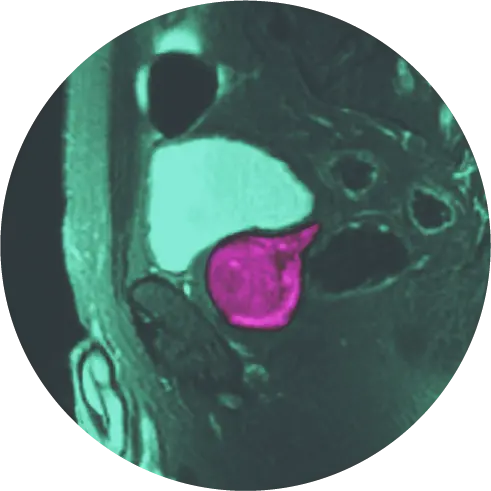Although breast cancer usually can’t be prevented, early detection is a key part of successful treatment of the disease.
Mammograms are important tools in detecting breast cancer, but performing breast self-exams also can increase your chance of finding breast cancer in its early stages.
According to the National Breast Cancer Foundation, about 40 percent of diagnosed breast cancers are discovered by women who found a lump in a self-exam. Routine breast self-care can also help find noncancerous or benign conditions.1
This article offers a checklist for monthly breast care so that you can know what is normal for you and be better prepared to report any unusual changes to your health practitioner.
Perform a Monthly Breast Self-exam
The most important step in monthly breast care for women of all ages is to perform a self-exam. Everyone’s breasts are a little different. This practice enables you to have a good sense of how your breasts look and feel.
For example, it’s normal for your breasts to vary in texture and sensitivity at different points in your menstrual cycle. It’s also normal for your left and right breast to not exactly match. But performing these routine self-exams will alert you to something that is not normal, such as a breast lump, nipple discharge, or breast pain. You can report these changes to your doctor for possible further tests.2
It’s best to perform your breast self-exam at the same time every month. The optimal window of time is five to seven days after your period starts. That’s because at this time in your cycle, your breasts tend to be less tender or lumpy than at other times.
Here are changes to your breasts that you want to pay attention to:
- Lump
- Swelling
- Skin irritation
- Dimpling of skin (like an orange peel)
- Discharge from nipple (other than breastmilk)
- Nipple problems, such as pain, redness, flaking, or turning inward
You can do the self-exam while lying down, standing in front of a mirror, or while taking a shower. As you get more practice, you’ll discover what place or position is most comfortable for you.
Lying down. Place a pillow beneath your right shoulder and your right arm behind your head. Using your left hand, gently move your finger pads around your right breast. Use light, medium, and firm pressure. Then, gently squeeze the right nipple. Repeat these steps for the other side.
Before a mirror. Standing with your arms at your sides, visually inspect both breasts and armpit areas. Then, do the same thing with your arms raised over your head. Look and feel for any swelling, contouring differences, dimpling, or changes in the nipples. Now, press your palms firmly on your hips to flex your chest muscles. Notice any changes, particularly on one side. Gently squeeze each nipple.
In the shower. Using your middle finger pads, check the breast and armpit area by touching the skin with light, medium, and firm pressure. Take note of any lump, thickening, hardened area, or any other breast changes. Gently squeeze each nipple.
If you do find a lump or notice any of the other changes mentioned above during your monthly self-exam, consult your doctor. But it’s important to keep in mind that the majority of breast lumps are benign.3,4
Other Forms of Monthly Breast Self-care
In addition to performing your monthly self-exam, here are other steps to place on your monthly breast health checklist.
Maintain a healthy weight. Obesity – defined as having a body mass index (BMI) of over 25 — may increase your risk of breast cancer, especially after menopause. Being overweight also may increase the risk of a breast cancer recurrence. The higher risk is due to the fact that additional fat cells mean higher estrogen levels in the body, and more estrogen can cause hormone-receptor-positive cancers to develop in the breasts.5
Adopt an active lifestyle. Many recent studies link physical activity with a lower breast cancer risk. Researchers theorize that physical activity regulates levels of estrogen and insulin, which can fuel breast cancer growth. Routine exercise also helps women stay at a healthy weight, which helps regulate hormone levels.6
Minimize alcohol consumption. Women who consume more than one alcoholic beverage a day are at higher risk for breast cancer. Here’s why:
- Alcohol consumption can lead to unwanted weight gain, which can lead to increased cancer risk.
- Alcohol can increase the production of estrogen and other hormones linked with breast cancer.
- People who drink alcohol are more likely to have higher amounts of folic acid in their bodies, which may be linked to an increased cancer risk.7
Start a family. Women who give birth to their first child before the age of 30 and breastfeed their babies for at least six months may have a lower risk of developing breast cancer.8
Stop smoking (or don’t start). Research links cigarette smoking to a higher risk of breast cancer in premenopausal women. Also, very heavy second-hand smoke exposure may increase the breast cancer risk in postmenopausal women.9
Schedule your mammogram. Last but definitely not least, you should schedule your appointment for a mammogram. In addition to your monthly self-care exam and the other lifestyle factors mentioned above, keeping up with the recommended mammogram schedule should be a significant part of your breast health regime.
Current recommendations for mammograms are:
- Yearly exams for women starting at age 40
- Screenings should continue for healthy women who expect to live 10 years or more.10
Is it time for you to take control of your breast health? HALO Diagnostics offers breast screenings at our HALO Breast Care Center in Chico, Silicon Valley MRI in Silicon Valley, Palms Imaging Center in Oxnard, and Precision Imaging Centers’ four locations in and around Jacksonville, Florida.
References
- https://www.nationalbreastcancer.org/breast-self-exam
- https://www.mayoclinic.org/healthy-lifestyle/womens-health/basics/breast-health/hlv-20049411
- https://www.nationalbreastcancer.org/breast-self-exam
- https://www.hopkinsmedicine.org/health/wellness-and-prevention/breast-health-preventive-care
- https://www.breastcancer.org/risk/risk-factors/being-overweight
- https://www.cancer.org/latest-news/get-moving-to-help-reduce-your-risk-of-breast-cancer.html#:~:text=It’s%20thought%20that%20physical%20activity,keep%20the%20immune%20system%20healthier.
- https://www.mdanderson.org/publications/focused-on-health/alcohol-breast-cancer-risk-what-to-know.h30Z1591413.html
- https://www.cancer.gov/about-cancer/causes-prevention/risk/hormones/reproductive-history-fact-sheet#:~:text=Women%20who%20are%20older%20than,declines%20after%20about%2010%20years.
- https://www.breastcancer.org/risk/risk-factors/smoking
- https://www.cancer.org/cancer/breast-cancer/screening-tests-and-early-detection/american-cancer-society-recommendations-for-the-early-detection-of-breast-cancer.html




